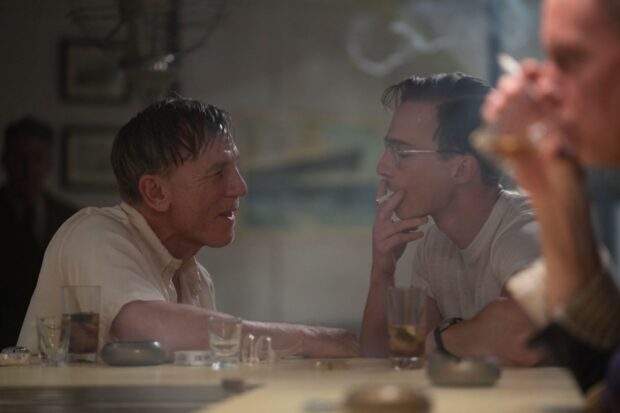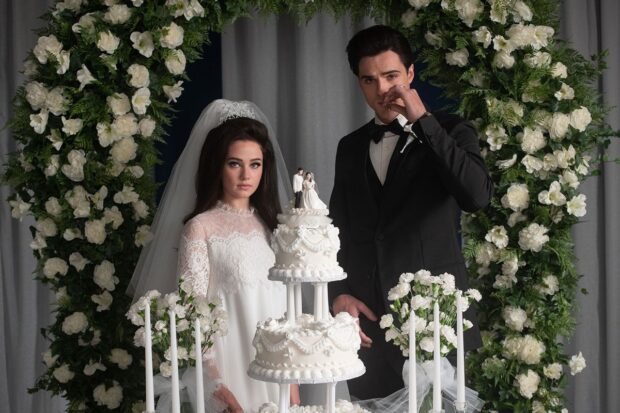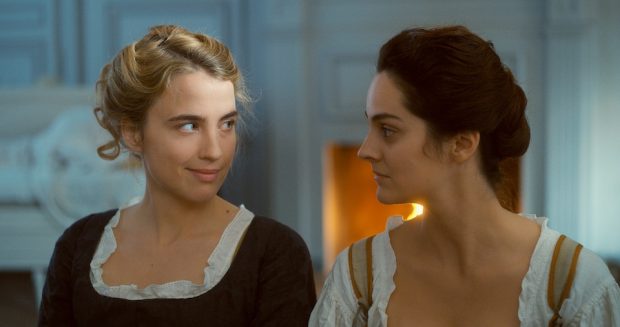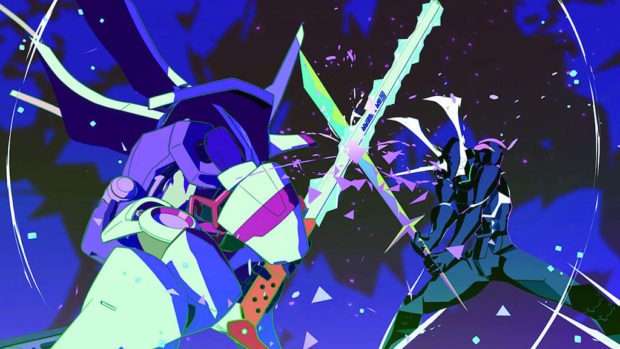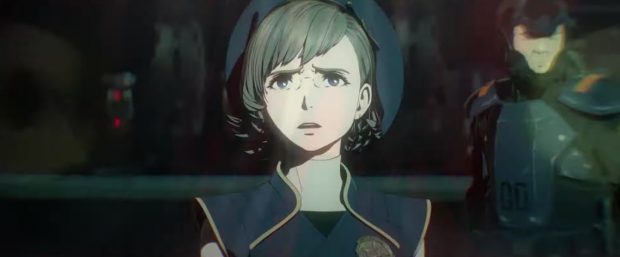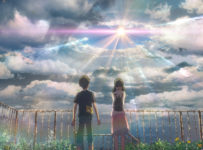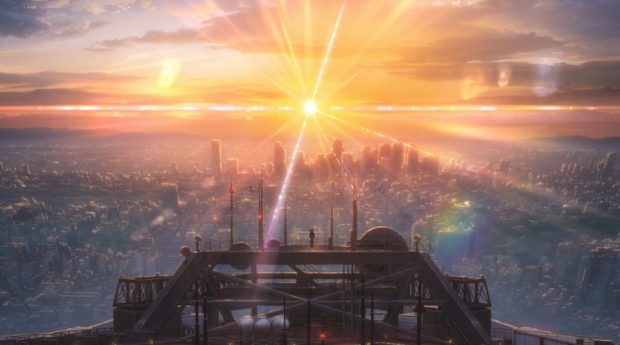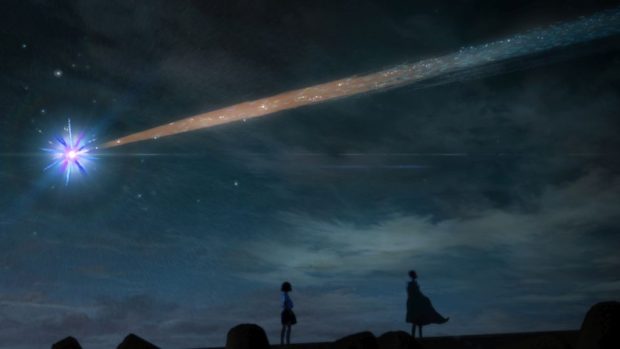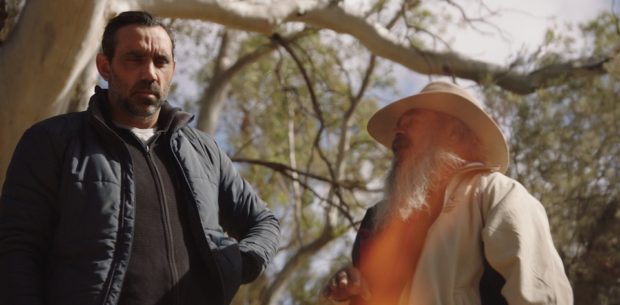Gia Coppola opens her third feature with a close-up of Pamela Anderson in the middle of an audition. The moment sees her character of Shelly, a 57-year-old showgirl who has spent her entire career in the Las Vegas show Le Razzle Dazzle, nervous and unsure of what she’s doing. Yet this is the most intimate and raw moment in a film that fails to ever get beneath the skin of its character.
Like The Wrestler before it, Coppola and screenwriter Kate Gersten attempt to frame Shelly’s journey in a naturalistic light. Eschewing the bright lights of the Vegas Strip, the film follows Shelly largely backstage as she struggles to keep pace with younger dancers Jodie (Kiernan Shipka) and Marianne (Brenda Song). Though she treats them like daughters, her own daughter Hannah (Billie Lourd) remains distant, a dynamic the film hints at but never fully explores.
Shelly’s world unravels when the softly-spoken Eddie, the producer of the revue, tells her that the show she has been in for over three decades will be closing in a few weeks. Having wrapped her identity so completely in the show, self-deluding that she’s carrying on a French stage tradition, she is unable to move on.
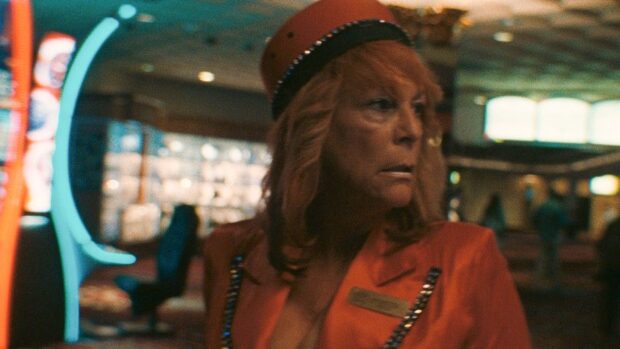
There are moments where Coppola seems to grasp the weight of Shelly’s predicament, but too often, the execution undermines the intent. Shelly’s best friend, former showgirl Annette (Jamie Lee Curtis)—embittered, addicted to gambling, and now working as a waitress—serves as both Shelly’s antithesis and her only model for a possible future. Yet the film never lingers on her for long, just as it struggles to focus on anything else, as Coppola and Gersten continue introducing new threads without ever weaving them together.
Nowhere is this more evident than in a key sequence where Annette dances her heart out to Bonnie Tyler’s Total Eclipse of the Heart on the casino floor. What should be a defining moment instead becomes an awkwardly edited montage, cutting rapidly between Annette and other characters as if unsure what emotion to convey. In another film, it might have played as parody—here, it simply falls flat.
The choice to cast Anderson as Shelly is somewhat inspired, and there are moments where it feels like she’s speaking through her avatar. Yet for all the praise she will deservedly receive for tackling this role, she ultimately struggles with the same creative limitations as her character. Her breathy vagueness recalls Monroe, but without the ironic winking, only emphasising how meagre the script’s offerings are.
Of course, it’s hard to shine when Curtis is delivering a powerhouse supporting performance right next to you. Like Anderson, she too has been pigeonholed at points in her career, but here she lays it all bare with triumphant conviction. Bautista also surprises in a low-key role that suggests more depth than we ever truly get to explore. Lourd, however, simply feels miscast.
On a technical level, there are fleeting glimpses of beauty. Cinematographer Autumn Durald Arkapaw frequently employs a wide-angle lens, capturing the Vegas Strip as a hazy, fading remnant of its former fantasy. Even in close-ups, figures at the edge of the frame blur into obscurity. While this visual approach could align with Shelly’s unravelling perspective, it more often feels like an unintentional distraction, muddying rather than enhancing key character beats.
THE LAST SHOWGIRL offers no conclusive ending for Shelly, its dreamlike denouement suggesting she has yet to accept her fate. Ultimately, it’s a shame, as there’s a strong story at the heart of this—one that would have benefitted from a serialised format. In a way, that might have also brought Anderson full circle, back to the medium that made her a household name.
2024 | USA | DIRECTOR: Gia Coppola | WRITERS: Kate Gersten | CAST: Pamela Anderson, Jamie Lee Curtis, Billie Lourd, Dave Bautista, Brenda Song, Kiernan Shipka | DISTRIBUTOR: Madman Films (Australia), Roadside Attractions (USA) | RUNNING TIME: 89 minutes | RELEASE DATE: 20 February 2025 (Australia), 13 December 2024 (USA)


